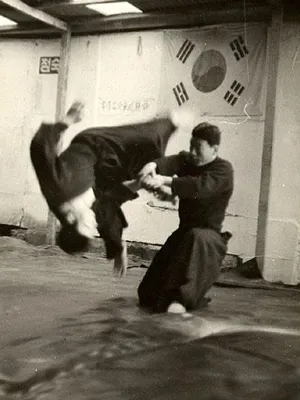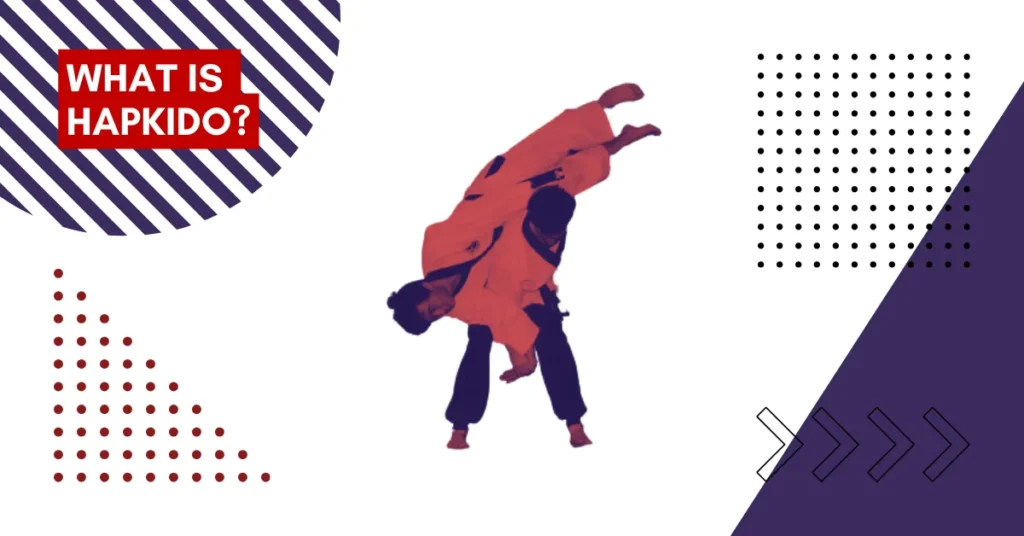Did you know that Hapkido, a Korean martial art, is widely practiced around the world for its practical self-defense techniques?
Did you know that the creation of well-known martial arts like Aikido and Hapkido was influenced by the ancient Japanese martial art of Aikijujutsu? Developed by Minamoto no Yoshimitsu in the eleventh century, this fighting style places a strong emphasis on joint locks, throws, and tactical self-defense.
Daitō-ryū Aiki-jūjutsu, another name for aikijutsu, focuses on the concept of “aiki“—blending with an opponent and using one’s own internal energy to defeat them. For practitioners of all ages and ability levels, Aikijujutsu is a complete self-defense system that combines harsh and soft moves in the form of throws, kicks, joint locks, and blows.
Hapkido provides a thorough training experience that improves your capacity to defend yourself and defeat your opponents, regardless of your level of experience as a martial artist or your desire to acquire self-defense techniques.
Table of Contents
Key Takeaways
- Hapkido is a Korean martial art known for its practical self-defense techniques.
- The art incorporates joint locks, circular motion, and pressure points.
- Control and redirection of force are key principles in Hapkido.
- Hapkido has evolved into various branches and styles.
- Practicing Hapkido enhances self-defense skills and promotes a deeper understanding of combat.
The History and Major Figures of Hapkido
The birth of modern Hapkido can be traced back to the efforts of Choi Yong-Sool and his prominent students in the post-Japanese colonial period of Korea. Choi Yong-Sool, considered the founder of Hapkido, played a pivotal role in its development. After returning to Korea from Japan, where he learned techniques from Daitō-ryū Aiki-jūjutsu, Choi Yong-Sool incorporated these techniques into the Korean martial art.
Choi Yong-Sool’s influential students, including Chinil Chang, Seo Bok-Seob, Ji Han-Jae, and Kim Moo-Hong, further contributed to the spread and innovation of Hapkido. Each student made significant contributions, adding their own expertise and perspectives to the art. Chinil Chang, for example, emphasized the importance of Ki, or inner energy, in Hapkido. Seo Bok-Seob focused on the development of joint locks and pressure points, while Ji Han-Jae introduced circular motion principles. Kim Moo-Hong brought his knowledge of weapons into the practice of Hapkido.
Myung Jae-Nam, also known as Hapkido’s bridge to Aikido, played a vital role in connecting the two martial arts. Myung Jae-Nam studied Aikido under the renowned Morihei Ueshiba and later incorporated Aikido techniques and philosophy into Hapkido.
Together, Choi Yong-Sool and his students paved the way for Hapkido to become a distinct Korean martial art with its unique characteristics and techniques. Their contributions and teachings shaped the history and lineage of Hapkido, influencing its growth and development over the years.
Hapkido Lineage:
| Founder | Primary Disciples |
|---|---|
| Choi Yong-Sool | Chinil Chang, Seo Bok-Seob, Ji Han-Jae, Kim Moo-Hong |
| Choi Yong-Sool | Myung Jae-Nam |
The Techniques and Principles of Hapkido
Hapkido, a dynamic Korean martial art, encompasses a wide range of techniques that incorporate joint locks, circular motion, and pressure points. This comprehensive self-defense system combines striking and grappling techniques, equipping practitioners with the ability to adapt to various combat situations.
Joint locks play a crucial role in Hapkido, allowing practitioners to control and immobilize their opponents. By manipulating joints and applying leverage, hapkido techniques can effectively neutralize an attacker’s power and restrain their movements.

The art of Hapkido embraces the principle of circular motion. By utilizing circular movements, practitioners can redirect an opponent’s force and use it against them. This concept empowers hapkido practitioners to overcome adversaries with skill and finesse, rather than relying solely on brute strength.
Hapkido also integrates the use of pressure points to subdue attackers. By applying precise strikes to specific areas of the body, practitioners can temporarily immobilize their opponents or gain a tactical advantage in a self-defense scenario.
Self-defense is a fundamental aspect of Hapkido. Practitioners are trained to defend against various types of attacks, equipping them with the skills and knowledge necessary to protect themselves in real-world situations.
“In Hapkido, we understand that redirecting force is as important as generating force. By harnessing the circular motion and exploiting an opponent’s vulnerabilities, we can effectively control and neutralize threats.”
Whether it’s joint locks, circular motion, or pressure points, Hapkido techniques are meticulously designed to enable practitioners to protect themselves effectively and overcome their opponents.
Conclusion
Hapkido is a dynamic Korean martial art that specializes in self-defense techniques and principles. By incorporating joint locks, circular motion, and pressure points, hapkido equips practitioners with the skills necessary to effectively protect themselves. Unlike relying solely on brute strength, hapkido emphasizes the art of redirecting force, enabling practitioners to overcome opponents with finesse and technique.
With a rich history associated with renowned figures such as Choi Yong-Sool and his influential students, hapkido has gained global recognition as a practical and comprehensive approach to self-defense. Its wide-ranging techniques encompass joint locks, circular motion, and pressure points, providing practitioners with the tools needed to successfully navigate various combat scenarios.
Throughout the years, hapkido has become a widely practiced martial art, attracting beginners and experienced martial artists alike. Through hapkido training, individuals have the opportunity to enhance their self-defense skills and gain a deeper understanding of the art of combat. Whether you are seeking to develop your self-defense techniques or explore the principles behind hapkido, this Korean martial art offers a unique training experience that can empower and transform practitioners.
FAQ
What is Hapkido?
Hapkido is a hybrid Korean martial art that focuses on self-defense techniques and principles. It combines joint locks, circular motion, and pressure points to enable practitioners to defend themselves effectively.
What are the major figures in the history of Hapkido?
The major figures in the history of Hapkido include Choi Yong-Sool, Chinil Chang, Seo Bok-Seob, Ji Han-Jae, Kim Moo-Hong, and Myung Jae-Nam.
Is Hapkido useful in a street fight?
Hapkido is highly practical for street fights, emphasizing adaptable techniques like joint locks and strikes for real-world self-defense.
Is Hapkido better than Aikido?
The preference between Hapkido and Aikido depends on individual goals. Aikido focuses on mutual understanding, while Hapkido emphasizes intense fitness, vital area targeting, and a comprehensive combat approach.
Is Hapkido used in the military?
Yes, Hapkido techniques are incorporated into military training due to their adaptability and practicality in diverse combat situations.
Is Hapkido better than Judo?
The choice between Hapkido and Judo is subjective, with Judo’s formal competitive framework contrasting Hapkido’s versatility in self-defense techniques. The preference depends on individual interests and objectives.
Is Hapkido suitable for beginners?
Yes, Hapkido offers techniques and training suitable for beginners. It is a comprehensive martial art that caters to practitioners of all levels, from beginners to more experienced martial artists.
How can Hapkido enhance my self-defense skills?
Hapkido teaches practical self-defense techniques that can be applied in real-life situations. It trains practitioners to utilize their opponent’s power against them, rather than relying solely on brute strength.

